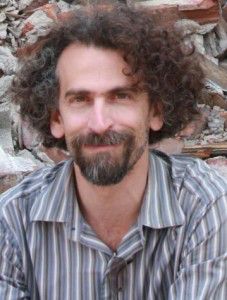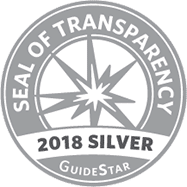 In October 2014, Sasha Abramsky addressed hundreds of our supporters as the keynote speaker at our annual Harvest Celebration Dinner. The British-born journalist shared with us stories from his tour of the United States in the prior decade. His travels had taken him to cities and towns all across the country where he encountered surprising levels of poverty and the people mired in it.
In October 2014, Sasha Abramsky addressed hundreds of our supporters as the keynote speaker at our annual Harvest Celebration Dinner. The British-born journalist shared with us stories from his tour of the United States in the prior decade. His travels had taken him to cities and towns all across the country where he encountered surprising levels of poverty and the people mired in it.
Their voices and stories helped inform his book The American Way of Poverty: How the Other Half Still Lives as well as Voices of Poverty: A Narrative of America’s Poor.
January is Poverty Awareness Month, so we have adapted Sasha’s words that evening into an eye-opening series of posts this month on Poverty in America.
A special POVERTY AWARENESS MONTH series |
|
|
|
The inspiration for Sasha’s “poverty tour” of the U.S.:
52 years ago social activist Matthew Michael Harrington published a book The Other America. Harrington was an extraordinary figure. He went around the country talking to people and exploring the stories of people who lived in poverty, people who were hungry, people who didn’t have access to health care.
In the late 1950s and the early 1960s there was a dominant narrative amongst the political classes – the “chattering classes” of America – that we had entered the Age of Affluence. The narrative held that in the post-World War II years, Americans had entered a period where everybody was upwardly mobile, and anybody who wasn’t already middle class was fast becoming middle class. The narrative said,
Yes, we know that poverty had existed. We know it existed way back in the 19th century – in slavery, and on the frontier. We know there was hardship and poverty at the end of the 19th Century when the great cities emerged as these huge centers for slum living and sweatshop work conditions. But the Progressive Era had dealt with that. We know there was poverty in the Great Depression – there were calamitous bread lines, millions of people lost their houses and their jobs – but that was then and it’s all better now.”
Poverty in America: From denial to “War” and back again:
In the late 1940s, politicians weren’t talking about poverty. Almost no economists, with the exception of J.K. Galbraith, were writing books about poverty. None of the great think tanks in the country were putting their intellectual and financial energies into studying poverty because we had entered the Age of Affluence.
Harrington knew that that was nonsense. He knew that because he had talked to the people living on the Bowery and in SROs. He’d seen kids in Appalachia and the South with distended bellies from malnutrition. He’d seen families too poor to buys shoes for their children so their children were walking to school barefoot. He was absolutely infuriated that these millions of men, women, and children, young and old, black and white, had been written out of the American dream. They’d been written out of the American story. They’d been made invisible.
So he writes this book and he calls it The Other America. He holds up a mirror to liberal America and he says “These are your ideas. These are your aspirations. These are the political values you claim to have about people as humans, and about justice, about the pursuit of happiness, and so on. Let’s live up to those ideals.” And he successfully embarrasses political America into action.
In 1964, a new president, President Johnson, gets up at the State of the Union address and in front of the whole world he says “we’re going to commit the moral, political, and economic energies of the United States of America to tackling poverty. Because poverty isn’t an individual disease it’s a societal crisis.”
And in the wake of that, America launches an experiment. The experiment is called the War on Poverty. It’s gone out of fashion to talk about it as anything other than a failure, but in actual fact, the War on Poverty did magnificent things. In 1964, 22% of Americans lived below the poverty line. 10 years later that was down to 11%.
By any rational measure, those energies that were invested in the War on Poverty paid off. But here’s the problem: Johnson had come into office in the wake of John F. Kennedy’s presidency. When Kennedy had come into office he had said “We are going to get a man in the moon in ten years.” Now that’s an all or nothing venture. You don’t say “Well, we almost got a man to the moon, so it’s a success.” You either do it or you don’t.
Johnson framed the War on Poverty as an all or nothing venture. So unless you’re a statistician or a policy wonk, by 1974, you’re looking at your city streets and you’re looking at the country and you’re still seeing poverty. You think that all of those tax dollars invested in the War on Poverty have gone nowhere. You pull back – you react against the War on Poverty and from the mid-70s on in, as a society, we began to systematically abandon our anti-poverty approaches.
We did it slowly at first. By the mid-’80s it picked up speed and increasingly we said,
Poverty isn’t our fault. Poverty is not a societal issue. Poverty is an individual sickness. It’s a moral failure. If you’re poor, it’s because you did something wrong. It’s not our responsibility. It’s not our problem. We’re not going to deal with it.”
Not surprisingly, poverty reared its head again. Not surprisingly, the numbers in poverty are now worse and the numbers of hungry and homeless Americans increased.
Here’s the barb from Michael Harrington’s tale: At the end of his book he says, “Ending poverty requires a multi-generational effort, not just a few years. It needs a systemic, long-term engagement. If we do not do that then 50 years from now, somebody else is going to have to write the exact same book.”
The thing about journalists is, we like a challenge. When I read that, I’d been travelling around the country for years. I’d been talking to people in prisons. I’d been talking to drug addicts. I’d been talking to the mentally ill and the homeless. I knew that poverty was a process and I decided I wanted to write a book about it.
A special NATIONAL POVERTY AWARENESS MONTH series |
|
|
|




No comments yet.